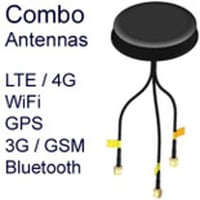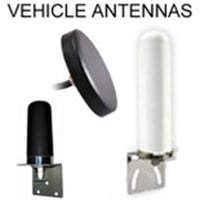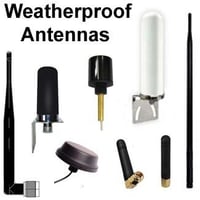Through-Hole Mount Antennas
Through-Hole-Mount Antennas
Through-Hole-Mount Antennas mount via a "stud" which fits through a hole drilled through the surface being mounted on, which could be a ceiling panel, wall panel such as drywall, enclosure wall, or vehicle roof. The "stud" has a hollow center through which the antenna cable runs: So almost all of the cable remains on one side of the surface and the antenna is mounted on the other.
The installation involves drilling a hole through the mounting surface, of a diameter such that the "stud" will fit perfectly and snugly through the hole.
On the side of the 'stud" where the cable comes out of the stud: A bolt, washer and gasket (or o-ring) is provided with the antenna, to screw-down tightly so that the antenna mounts flush against the mounting-surface. The gasket or O-rings seals around the hole, and thereby waterproofs / weatherproofs the cable-side of the antenna. contact with hole socket. The gasket or O-ring comes with the antenna. The contact point with the antenna in most cases also has a rubber gasket seal. These seals, and the construction of the antenna radome, provide the weatherproofing such that these antennas are typically rated IP65 or higher.
- Through-hole-mounts are rigid, neat and weatherproof. They can tolerate violent vibrations and shock. This makes them ideal for mounting antennas onto the roofs or vehicles and houses. The surface needs to be the correct thickness and material for the mount to screw through – sheet metal, fiberglass, plastic and wooden panel surfaces can accommodate these mounts.
- Through-Hole-Mount antennas are also called "Screw Mount Antennas."
- Through-Hole-Mounts can be found on NMO (New Motorola) range of antenna mounting products.







